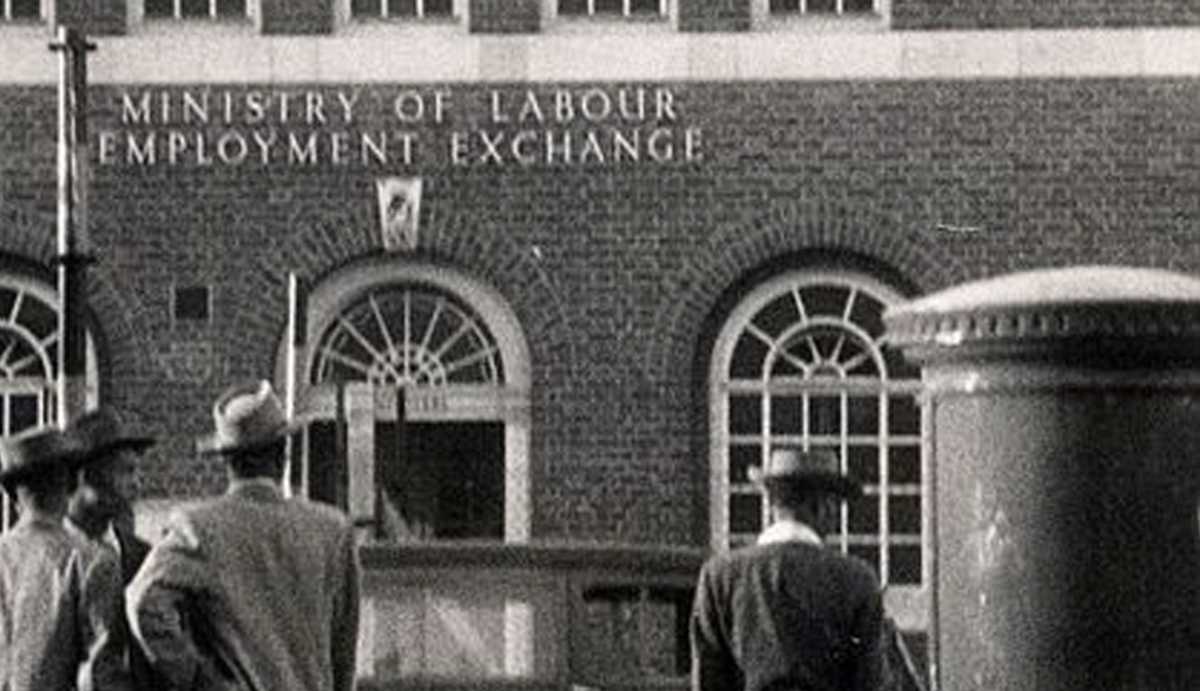In the 1940s, when migrants arrived in the UK from across the Caribbean, a new and distinct cultural identity would be born. In this extract, Eddie Chambers reflects on the extraordinary blend of social, political and cultural influences that gave rise to it, and why generations born and brought up in Britain developed markedly different terms of reference to their white counterparts. Black people have been present in Britain for many centuries, going back as far as Roman times. Whilst this presence has historically ebbed and flowed, it was not until the relatively recent period of the mid-twentieth century that Britain’s Black population swelled significantly and, within a period of little more than a decade, came to represent an intriguing and somewhat conspicuous new aspect of the British populace. Britain has of course, since the earliest times, been the destination – temporary or otherwise – of a long line of peoples. Among them are Huguenots, Jews, Celts and Saxons. In more recent decades, we can also speak of Irish, Italians, Poles and others. The crucial difference between these groups and immigrants of African, Caribbean and Asian backgrounds is the pretty blunt one of skin colour. While white immigrants within a generation or two have become assimilated and accepted as British, Black immigrants and their offspring have inevitably maintained a particularly conspicuous presence that has contributed to them not readily being regarded as British in the same ways as their white compatriots. This systemic, perennial impulse to regard those with visibly darker skins as somehow embodying different traits and characteristics has meant that the gradual formation of a separate cultural identity for Black Britons was, perhaps, inevitable. At every turn, certain pathologies ensured a persistent othering of Black people, with cultural consequences from the late 1940s through to the early 1960s. To understand the push-pull factors that contributed to Caribbean migration, we need to look at conditions that existed in Jamaica and, to varying degrees, other Caribbean islands and countries, in the years following the end of World War II. Those in the English-speaking Caribbean had been brought up under the British flag, so much so that many of the young men of the British Caribbean, like their white British counterparts, enlisted for duty in the war effort. Commentator Ernest Cashmore alluded to the affinity that those from countries such as Jamaica had to Britain. In his book, Rastaman: The Rastafarian Movement in England, he quoted a gentleman who recalled, ‘In Jamaica, children are taught all about Britain, its history, its heroes, etc. So coming over here we knew what to expect, or at least thought we did.’ Such sentiments are reflected in a feature on ‘coloured’ immigration in an edition of Picture Post magazine of 1949. Early in the piece, the writer, Robert Kee, noted that ‘it is important to remember that all colonial coloured people, of whatever origin or class, have been brought up to think of Britain with the greatest pride and affection as ‘The Mother Country.’ (West Indians even talk of Britain as ‘home’.)’ While these sentiments allude to the pull factor – that is to say, that which, in part at least, attracted would-be immigrants to Britain, there was also a concurrent push factor. In 1949, Robert Kee described the economic challenges of life in Jamaica, faced by many, in stark terms. Referring in part to migrants such as those who had in the previous year come to England on the Empire Windrush, Kee stated, ‘These have come here partly because of the economic impoverishment of their own country (the unemployed [sic] figure for Kingston, Jamaica, alone is 70,000.)’ This figure represented a significant proportion of the city’s labour force. In so many ways, beginning with the widespread implementation of the use of enslaved Africans in the latter half of the seventeenth century, issues of labour and employment had always been vexatious in the Caribbean. Enslaved Africans had been brought into the region for no other reason than to work the plantations and sugar mills, or otherwise attend to serving the master class, the plantocracy. The end of slavery in the early decades of the nineteenth century and the technological developments in manufacturing and harvesting processes meant that a massive proportion of the Black populations of Caribbean countries effectively and rapidly found themselves either unemployed or pitiably under-employed. Upon the abolition of slavery, businesses that had relied on wageless labour to turn profits could no longer expect to maintain the same high-profit margins, because they now had to pay the newly freed slaves a wage. Once viewed as assets, the newly freed slaves came to be regarded as a liabilities. As a consequence, labour and employment in the Caribbean became difficult and aggravating issues. There was one other significant reason why migrants from the British Caribbean wanted to enter whatever labour market there might have been in Britain. Frankly, there were precious few other destinations open to them. The USA had instigated draconian restrictions that limited Caribbean migration to a derisory annual figure. In many respects, the appeal of Britain can be set against Caribbean memories of earlier experiences of migration in and around Latin America. By comparison, migration to Britain promised to be an altogether different, and much more promising, prospect for post-war migrants than the woeful conditions described by Marcus Garvey in his writings about his travels in Central America. After all, the omens were good, and many of these Caribbean migrants left their respective countries ‘with a bolstered self-confidence and a sense of equality.’ Trevor Carter referenced the jolt that disabused Caribbean migrants of whatever good omens they may have been encouraged by, before their migration. ‘What we were unprepared for in Britain was racism. We knew that it operated – and was even legalised – in the States; indeed, some of us had chosen to come to Britain precisely because we believed racism did not exist here.’ But perhaps the most profound and formidable push factor was the deeply traumatic effects and consequences of slavery itself, which although having been abolished for well over a century, had poisonous effects that lingered still. Notwithstanding the migrants’ cultural grounding that they shared with white Britons, at every turn factors presented themselves that mitigated any prospect of colorblind cultural and social assimilation. Though Britain had not before (and indeed, not subsequently) played host to a body of immigrants whose loyalty to Britain often seemed to exceed that of their white British-born counterparts, this loyalty and familiarity with British institutions was neither respected nor reciprocated. The point about Caribbean migrants’ loyalty to Britain has been stressed repeatedly by a range of writers and researchers. For example, ‘… many Anglophone Caribbeans displayed a remarkable loyalty to Britain in both world wars and showed a fierce adherence to British educational, social and political institutions.’ But these immigrants found themselves being treated not as fellow Brits, but as sinister foreigners, to be kept at arm’s length and regarded as delinquent and, perhaps most damaging of all, as a ‘problem’. Though those migrating to Britain included many who were, or had aspirations to be educated professionals, the host community found itself unwilling or unable to appreciate the earnestness with which these immigrants sought not drama or confrontation but social assimilation and prosperity through employment. Many barriers to this aspiration existed, ranging from petty or not-so-petty prejudices against those deemed as unwelcome foreigners, through to widespread manifestations of what was known as the ‘colour bar’. Of course, Caribbean migrants who had worked in the Jim Crow South, or had some familiarity with the distressing treatment of Black workers in the countries of Central America referenced earlier, were perhaps not surprised at the prevalence of racism, even though they expected better from the British people. What was, however, an undoubted surprise, was the profound ignorance of white British people about the history, geography, systems of government, political personalities, sports, and cultural heritage of the countries of the Caribbean from which the immigrants came. Right from the earliest days of Caribbean migration to Britain, immigrants found themselves having to exercise a form of double consciousness — needing to demonstrate a familiarity with such things as British mores, culture, and societal structure, while at the same time retaining a sense of identity as Jamaicans, Trinidadians, Bajans, and so on. Needless to say, white Britons saw themselves as having no need to reciprocate or embrace anything other than the monoculturalism and insularity in which they had so self-evidently been steeped. This use of double consciousness as a coping strategy was alluded to by Trevor Carter: ‘As for those of us who had come to Britain to fulfill dreams in and to belong to a society which we thought we knew, we came to the conclusion that we had to operate both inside and outside the institutions of that society at the same time. 1961 was a peak year, of sorts, for Caribbean migration, so perhaps that is why the following year marked the beginning of the end of such relatively large-scale movements of peoples. With little or no prospect of family members, no matter how beloved, being able to freely or easily come to Britain, the country’s fledgeling Black community had to mobilise its own resources to continue to establish itself. With no immediate access to more numerous and concentrated pockets of African Diaspora peoples, particularly in the Caribbean, Black-British people had to rely on themselves for a sense of group identity. In this regard, Caribbean peoples were perhaps at a greater disadvantage than African people residing in Britain. Writing in 1949, Robert Kee made mention of the ways in which discrimination faced by Black migrants represented the shattering of a ‘deep emotional illusion’ which was ‘particularly true of the West Indians, who no longer have the tribal associations and native language which can still provide some fundamental security for the disillusioned African. The West Indian disillusioned with Britain is deprived of all sense of security. There were ways in which this isolating of Black Britain, rather than enhancing integration, had, perhaps counter-intuitively, the opposite effect. British-born Black people became an unfathomable and deeply suspect anomaly, as far as white Britons were concerned. Herein lay one of the fundamental reasons why a distinct Black-British culture would emerge and bloom during the mid-1970s to mid-1980s. With Black Britons simply not accepted as British, the development of a separate and distinct cultural identity was perhaps inevitable. The uprootedness caused by slavery, the need for them or their family members to travel abroad seeking work, the sponge-like ways in which influences from other environments, such as music, were absorbed and translated – all these factors and others had lead, perhaps improbably, to people in the Caribbean not only coming to terms with their multi-dimensional existence but thriving on it. A similar process – of coming to terms with, and seeking to thrive on a somewhat splintered and disregarded existence – would be clearly discerned in the cultural growth of Black Britain. This is an adapted extract from Roots & Culture by Eddie Chambers, which will be published by IBTauris on 2 March 2017. To order a copy visit www.ibtauris.com
The Rise of Black Britain

Migration to Britain promised to be an altogether different, and much more promising, prospect for post-war migrants than the woeful conditions described by Marcus Garvey in his writings about his travels in Central America.



